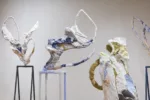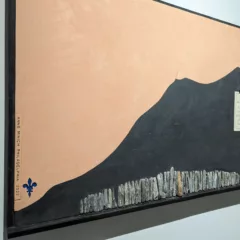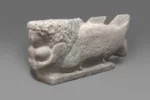“Stories of Almost Everyone,” organized by Aram Moshayedi at the Hammer Museum at UCLA (on view through May 6, 2018) is a beautifully-installed exhibition that provokes both admiration and frustration. The theme of the exhibition is the narrative context in which many contemporary artists embed the physical objects they present, and the discursive space museums create in exhibiting them. To offer a perspective beyond the curator’s, author Kanishk Tharoor was asked to produced an audio tour; I didn’t listen to it, but the museum provided a printed copy. Although intended to be heard while viewing them, Tharoor’s narrative seems to have been conceived independently of the works on view — rather like John Cage’s music for Merce Cunningham’s dances.
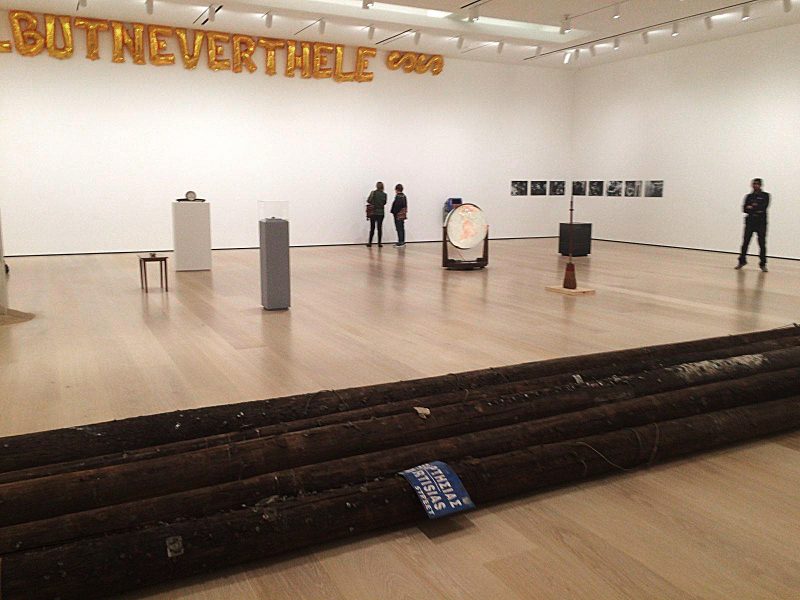
On first entering the gallery — one of two adjacent rooms with a floating wall creating a third space — my initial reaction is curiosity, then admiration for one of the most visually-seductive presentations of a group exhibition I’ve seen in decades. Arranging sixty-nine mostly sculptural works of tremendously-varying format, materials and scale is no mean feat. These are situated throughout the galleries without the usual conventions of neutrality, and in a manner that makes me want to know just what each work is doing there.
The curator as producer
I turn to the introductory text panel which includes this statement:
“Whether they are borrowed from the everyday world or sculpted into new forms, art objects for their part are often tasked with approximating the narratives that accompany them. By producing mediating texts and explanatory descriptions, museums participate in this activity on an equal footing with artists, who have come to consider forms of writing and language as integral parts of their work. It is increasingly difficult, in some instances, to decipher between artistic intentionality and curatorial interpretation,…”
Bull! I realize there is a generational divide, but I don’t think it is the place of the curator to compete with the artist. Do I really want to join Moshayedi in the gallery while he examines his navel? Many of the artworks keep him company in navel-gazing; they are footnotes that only make sense to an audience conversant enough to recognize their absent texts.
Stories for only a few who know the back story
“Sculpture #3” by Darren Bader is a yellow, lacquered plank leaning against a wall. Its appreciation depends upon viewers like me recognizing it as a work by Southern California artist, John McCracken (1934 – 2011). The label informs us that it is not a McCracken, but Bader doing McCracken — with further discussion about the “culture of the copy” and the suggestion that the present is “a moment when attribution and copyright remain arenas of contestation.”

Another work in need of back story is Lara Favaretto’s “Lost and Found” (1997). It appears to be a briefcase, haphazardly left beside a platform that holds a work by Richard Hamilton. It’s an ordinary briefcase — the sort that the warnings “if you see something, say something” address. But knowing it is an artwork, and reading on the label that it is locked and that its contents will never be known, reveals a trifecta of references to Marcel Duchamp. It’s an unaltered object, hence a readymade; its format refers to “Box in a Valise” (1935-41), the suitcase which Duchamp filled with miniature replicas of his work; and finally, the never-to-be-revealed “With Hidden Noise” (1916), the ball of string into which Walter Arensberg, per Duchamp’s instructions, placed a never-to-be-revealed object. Wasn’t I clever to have recognized all that?
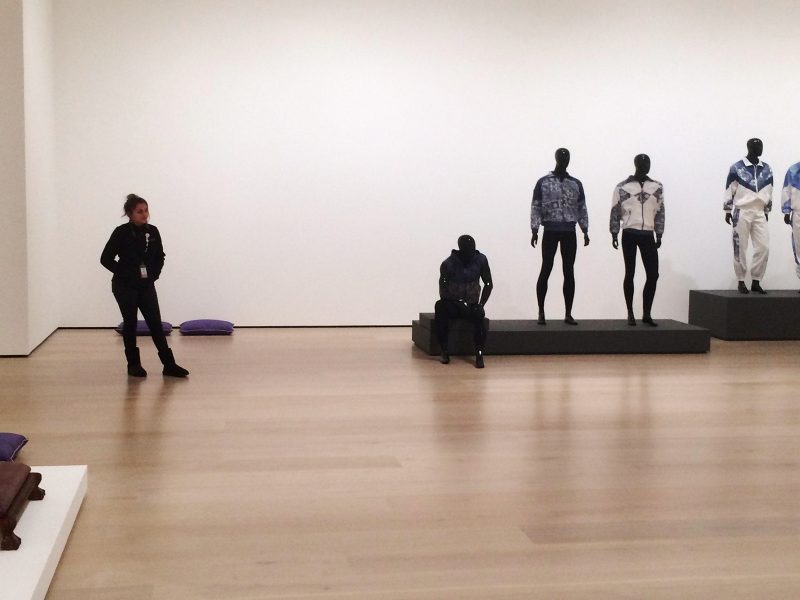
Need I mention Jill Magid’s “The Proposal” (2016), a visually-unexceptional diamond ring, spot-lit in a dramatic vitrine? It is accompanied by a large table case of documents supporting the artist’s shaggy dog story that the diamond was synthesized from the remains of the Mexican architect, Luis Barragán? Do I believe Magid’s tale? No. Does it matter whether it’s true? Not to me; it is equally absurd, whether truth or fiction. We all know by now that all narrators are unreliable; all stories test our credence. Did I need this provocation, and did reading about these artifacts enrich my prior understanding of the work? Not a bit. The story is sufficient.
If Martin Creed’s “Work No. 569” (2006) requires prior knowledge for appreciation I’m missing something. But I love it: every half hour the open lid of Creed’s jerry-rigged grand piano free falls, causing the strings to produce a dissonant cacophony throughout both galleries. As I comment to the friend who joins me on my first visit, anyone might wonder what a crashing piano lid would sound like but artists actually get to make it happen. I am delighted with the unapologetic anarchy of the piece.
Mining the Museum?

As to the museum constituting a discursive frame, just as one can describe certain art made in 17th century Europe as “court art,” most of the work in this exhibition is surely “museum art.” Much of its meaning would be lost if it were sited anywhere else. If seen in someone’s home, Laura Favaretto’s briefcase and Latifa Echakhch’s abandoned sneakers would disappear into the everyday stuff of domestic life.
“Stories of Almost Everyone” provides me with a lot to ponder. Both the curatorial premise and much of the art reflect an academicization of institutional critique — which developed oppositionally but has now been thoroughly digested, accepted, and even welcomed by the objects of that critique, and taught in MFA programs. If the curator wanted to question the institutional frame, why was he so timid? He could have tried framing the work differently, asking other museum staff to write the labels — say the guards, visitor services or housekeeping. Or reached out to the UCLA community, soliciting labels from the literature and philosophy departments, librarians or the law school, where someone might have given an interesting perspective on questions of copyright. Better yet, he could have placed a box by the door and asked visitors to write labels, then posted the ones that made clear points. That would have truly loosened the institution’s monopoly on generating discourse.
I respect Moshayedi’s effort, but also wish he had set the work within a larger frame. He might have asked why, during a time of worldwide social and political upheaval, with unprecedented numbers of lives overturned by the impact of global capitalism, climate change, wars and tribal disputes, so many artists from around the globe would choose such a narrow focus, creating artworks addressed to a very small and elite group of art world insiders.


